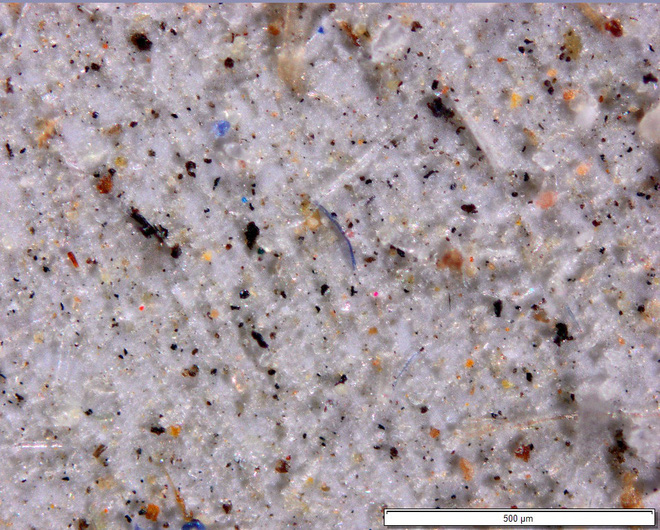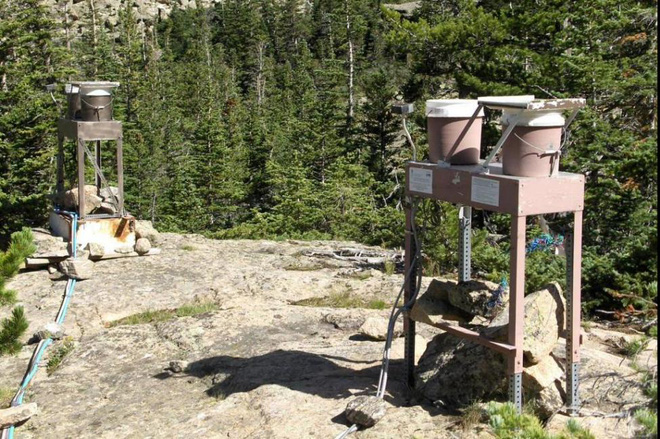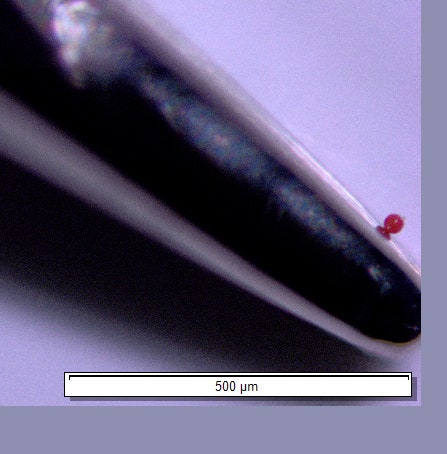Plastic is pouring from the sky: A scary new version of acid rain
- Tram Ho
Many people like to travel to pristine lands to breathe fresh air. But now, an invisible threat is really blowing through the air and falling through raindrops. These are microscopic particles, tiny pieces less than 5 mm long … of plastic bottles, or microscopic frayed particles from clothing. All of these pollutants are swept into the Earth’s atmosphere and are being “deposited” in the wilderness.
And a recent report in the journal Science has revealed amazing findings. After collecting rain and air samples for 14 months in national parks in the western United States, such as Joshua Tree, Grand Canyon, Bryce Canyon … scientists have calculated that there are more than 1,000 tons of micro counties fall to these 11 areas each year. That’s the equivalent of more than 120 million plastic water bottles. These protected areas account for only 6% of the total US area and are still considered to be areas of fresh air.
“The numbers are so huge, it’s shocking,” said Janice Brahney, an environmental scientist at Utah State University who wrote the report.

Small pieces of plastic were collected in remote areas of the western United States.
This report seems to confirm an increasingly horrible scenario. These are micro-plastic particles that are being blown around the world, landing in arguably the purest habitats, such as the Arctic and remote regions. They flow into the ocean through sewage systems and affect deep-sea ecosystems. They are even pushed out of the water and blowing inland through the sea breeze. And now not only in the western United States, but probably around the world, in the atmosphere full of micro-particles, will fall to the ground in the rain. and scientists call them new-style acid rain.
However, plastic rain can be “crafty” more than acid rain. Because it can not control or prevent the source of acid rain like rain by limiting emissions from power plants or vehicles. Humans have no way to filter water or soil or air to remove particulate matter.
Plastic is everywhere and everything around us can be an alarming source of pollution. And the plastic will never really disappear, instead they will be broken down into smaller particles, penetrating into every little corner of the planet. Worse, plastic waste is expected to skyrocket from 260 million tons a year to 460 million tons by 2030, according to a report from McKinsey. More middle-class people in developing countries mean more consumerism and more plastic packaging.

One of the devices used to collect microplastics.
Returning to the report, to quantify the microplastics, the researchers sampled both rainwater and air. They have a wet bucket to collect rain water and a dry bucket to collect air. A sensor will detect rain and open a wet bucket while the lid is dry. And vice versa, when the sun is dry, the bucket will collect microscopic particles of plastic that fly in the wind while the wet bucket is closed. The researchers then looked at the size of the microscopic particles they collected in the bucket.
Extremely scary results. 98% of samples collected in a year contained microplastics. On average, 4% of airborne particles are synthetic polymers. The particles in rainwater are larger. Microfibers, originating from animals such as polyester clothing, account for 66% of synthetic materials in wet samples and 70% in dry samples.
And scientists can also easily identify the path of microscopic particles. The wind blows them off the ground in urban areas, carrying them away before pushing them to the ground through the rain. And microscopic particles can even act as condensing nuclei, when the debris attracts water vapor to form a cloud.
Dry dust, on the other hand, often travels longer distances. Due to their smaller size and easily swept away by the wind. For example, dust from the Sahara can also easily blow across the Atlantic Ocean and fall into the Amazon rainforest.
And the direction of jet travel also affects airflow. For example, in the United States, jets usually fly from west to east and vice versa. In Europe, the microplastics here are being pushed to the North Pole.

The scale here is measured in micrometres, or one millionth of a meter.
And what’s even more difficult is that the microparticles will eventually be broken down into nanoplastics, so small that researchers won’t be able to detect them without the right equipment. But if we can’t see them in front of us, doesn’t mean we don’t breathe them into the lungs.
Plastic fragments tend to release chemicals in their composition over time and they are also known to transport bacteria or viruses. And this is also gradually affecting the species. A study published earlier this year found that crabs exposed to microplastics have difficulty creating new shells as they grow.
Brahney also noted that microplastics may also be changing the thermal properties of the soil, for example changing the way it absorbs and stores heat. They can lead to a rise and fall of soil bacteria, change the way nutrients are transferred, even the way water gets through the soil.
While there is still much that science has to learn about the cycle and life cycle of microplastics, one thing has been clearly and irrevocably confirmed. That you will not be able to put the plastic back into the bottle.
Refer to Wired
Source : Genk
